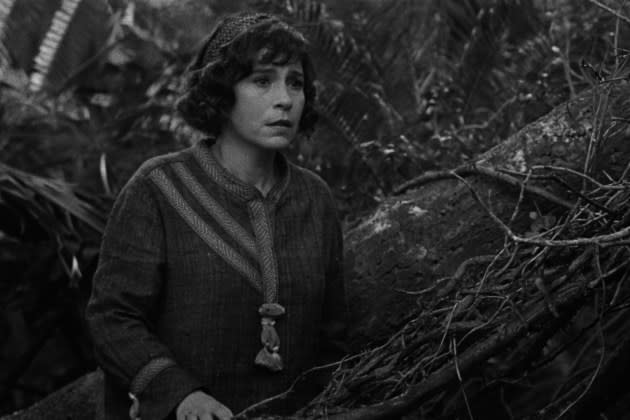‘Grand Tour’ Review: Miguel Gomes’ Avant-Garde Eastern Odyssey Is Not Recommended For Tourists – Cannes Film Festival

After the extraordinary triple whammy of Emelia Perez, The Substance and Anora, here comes Portuguese auteur Miguel Gomes with a blast of cinematic chloroform to calm the Cannes Competition down a touch.
A talky, experimental odyssey through the Far East, it deals with issues of colonialism and gender, but in such an oblique way that it’s hard to fathom without referring to the rather cryptic press notes that come with it. Fans of Gomes’ deadpan style — with which he broke out in 2012 when his film Tabu became an arthouse favorite on the festival circuit — no doubt will respond to its eccentricity, its wry irony and its undeniably striking monochrome cinematography. Less enlightened viewers may wish to take a pillow.
More from Deadline
The film takes place in two timeframes. The fictional narrative takes place in 1918 and begins with British civil servant Edward Abbot (Gon?alo Waddington) arriving at Mandalay station in Burma. Although he apparently hasn’t seen his fiancée Molly Singleton (Crista Alfaiate) for seven years, Edward is drunk, wearing a groom’s outfit and carrying a bunch of flowers. But that’s not necessarily what we see. Instead, and throughout, we mostly hear the story in voiceover, performed by a variety of unnamed narrators, male and female, from whichever country its protagonists are in at the time. It takes some getting used to, since often the footage used is from the present day, much of it showing how modern the East has become, with its traffic-heavy cities and love of karaoke.
Edward catches the midnight train to Rangoon and then takes a ship to Singapore, where he stays at the swanky Raffles hotel and meets an old acquaintance, Timothy (Cláudio da Silva), an expat of no fixed means with an outstanding bill for 18 Singapore Slings drunk the night before. Timothy is Molly’s cousin and considers Edward to be a lucky man. He also thinks that, because of his travels, he is a spy, which Edward refuses to confirm or deny. When a telegram arrives from Molly (“ARRIVING. STOP”), Edward takes off again, this time to Bangkok, with a tour guide and his three wives.
This, effectively, is the plot, apparently inspired by a briefly mentioned anecdote in Somerset Maugham’s 1930 travel diary The Gentleman in the Parlor, in which the writer recalled an encounter with a fellow Brit who was running away from the prospect of an unhappy marriage. Gomes takes this scenario a step further when, around the halfway mark, Molly appears and takes over from Edward as the protagonist, following his ghost trail through Thailand, Vietnam, the Philippines and Japan. Sometimes there are flashes of color, and, mysteriously, Gomes frequently returns to a street puppeteer — scored with chiming Javanese gamelan music — who tells the story of a giant god and a mortal couple.
RELATED: Cannes Film Festival Palme d’Or Winners Through The Years: A Photo Gallery
Gomes films it all in his traditional pastiche visual style, a deliberate throwback to silent cinema, complete with frequent use of iris-ins to end a scene. The leads, similarly, give theatrical performances that are anything but natural (or British), and play their scenes on busy, exquisitely designed soundstages.
The push-pull dynamic of the man terrified of commitment and a woman in pursuit is mildly entertaining, much like an early Guy Maddin movie, but the political subtext, as it was in Tabu, is a little trickier to define. Gomes has enough admirers now that there’s a small but dedicated audience for his sophisticated meditations on history and culture, one that is ready and willing to read into his verbose juxtapositions of fact and fiction, today and yesterday. For the rest of us, though, it all seems a little too much like hard work.
Title: Grand Tour
Festival: Cannes (Competition)
Director: Miguel Gomes
Screenwriter: Mariana Ricardo
Cast: Crista Alfaiate, Gon?alo Waddington, Cláudio Da Silva, Tran Lang-Khê
Running time: 2 hr 9 min
Best of Deadline
Sign up for Deadline's Newsletter. For the latest news, follow us on Facebook, Twitter, and Instagram.
Solve the daily Crossword

